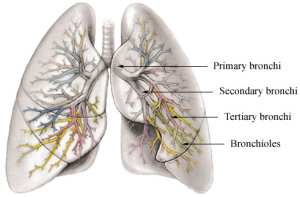

MedFriendly®


Bronchotomy
A bronchotomy is a surgical incision (cut) into the
throat. Bronchotomy is an older and more general term
that is usually replaced by a more specific term
denoting the exact area of the throat where the incision
occurs. These procedures tend to be performed when a
patient’s life is threatened by some type of airway
obstruction. The most common example of a
bronchotomy is a tracheostomy, which is an incision
into the trachea (windpipe) that is designed to help the
person breathe when some type of medical situation is
otherwise preventing it. This example of a bronchotomy
is one of the oldest surgical procedures.
Lungs and the bronchi.
FEATURED BOOK: Muller's Diseases of the Lung
Another example of a bronchotomy is a laryngotomy which is an incision into the larynx
(voicebox), which also helps with breathing when there is an obstruction in the upper
airway. A closely related example is a thyrotomy, in which an incision is made into the
larynx through the thyroid tissue. The latter refers to the thyroid gland, which is a butterfly-
shaped organ located in front of the neck that produces a natural chemical known as
hormones.
Bronchotomy comes from the Greek word “bronchus” meaning “windpipe,” and the Greek
word "temnein" meaning "to cut." Put the words together and you get “to cut windpipe.”
"Where Medical Information is Easy to Understand"™















